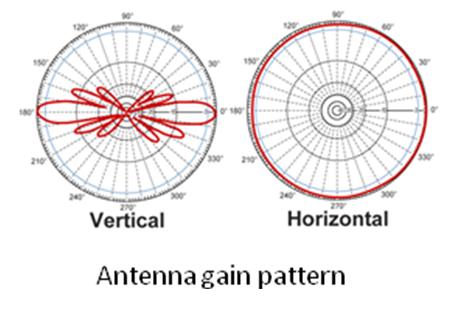Communications
The communications team is responsible for all in-flight communications and processing. There are two redundant communication systems on the OSMV: two wireless modems and antennas are connected to the CAN bus and are therefore accessible to both the F12 main flight computer as well as the dsPIC secondary flight computer. The antennas have toroidal radiation patterns, which provide omni-directional coverage in two directions, eliminating strict pointing requirements for Attitude Control Systems (ACS). The OSMV's antennas transmit and receive signals from a 3m parabolic antenna at the HETE-2 primary ground station in Cayenne.
The two antennas are mounted on along the length of the body on opposite panels of the OSMV to avoid the signal being blocked as much a possible. However, this configuration does not provide coverage if the OSMV is perpendicular to the earth, and therefore the design is reliant on the ACS thrusters to rotate the OSMV to an acceptable orientation for communication. A communication session can be closed by agreement of both the OSMV and ground station or from a time-out if the OSMV moves such that it can no longer communicate.

Testing: The modem to antenna test has been successfully completed. The attenuator test used an RF attenuator to simulate signal degradation at 700 km. Radiation pattern testing is also complete.
The Communication protocol outlines the rules for transmission of telemetry and command packets between the OSMV and at the HETE-2 primary ground station. The maximum body of a packet is 225 bytes as limited by the modem. Error detection bits are included in each transmitted message, but not error correction.